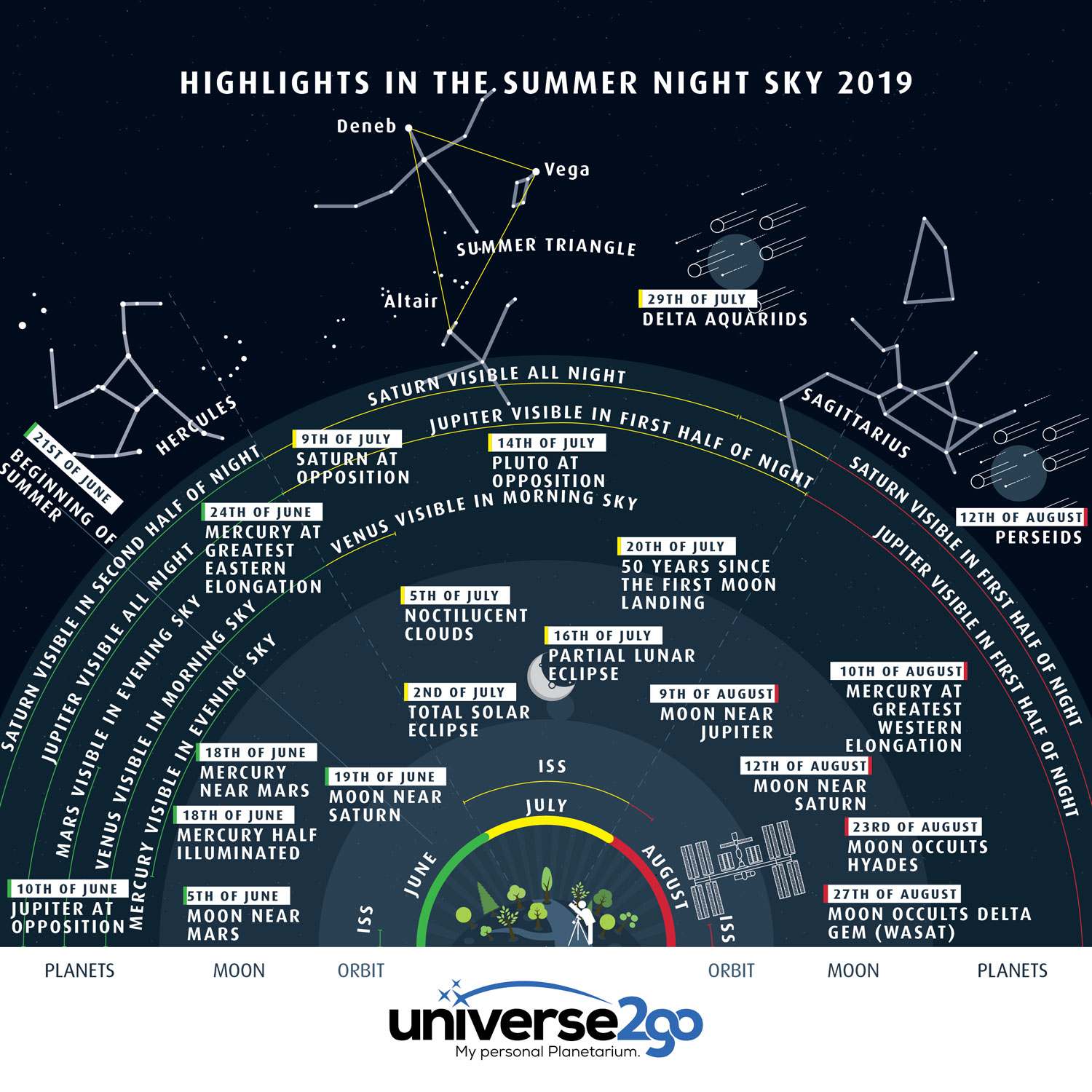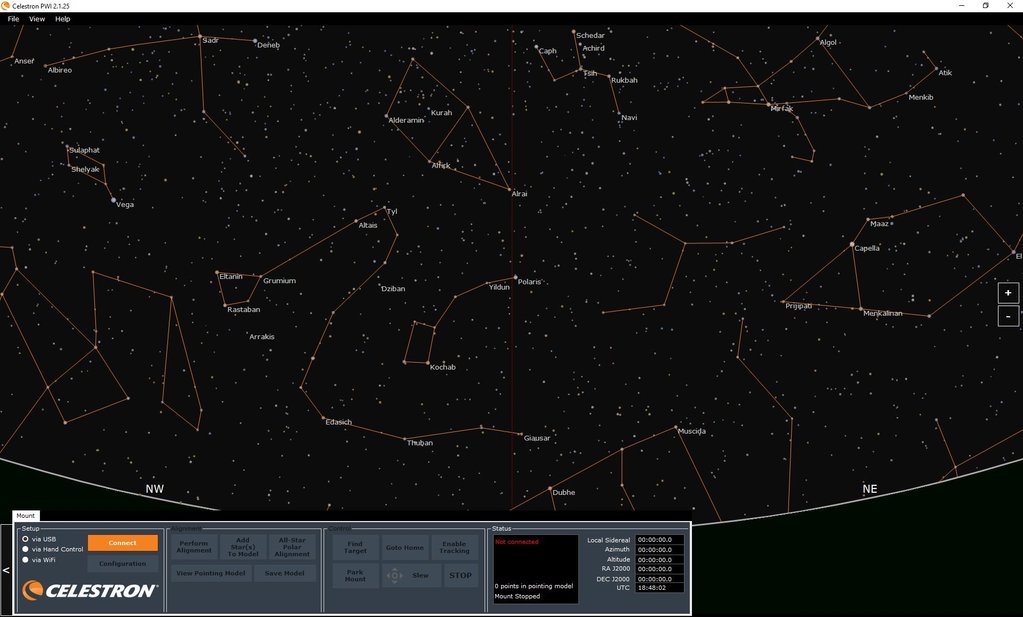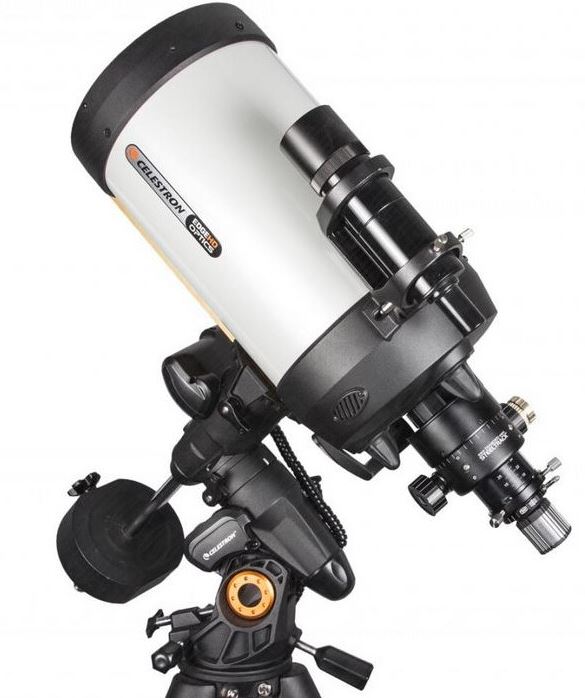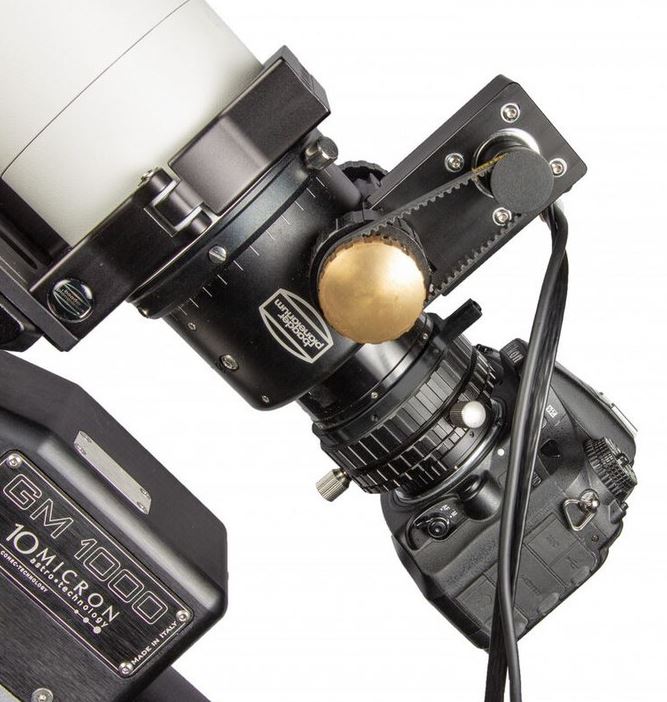Summer and warm temperatures: now all those who were hibernating in the winter can venture outside for a glimpse at the stars. But unfortunately it also gets darker later and then, as if turbocharged, light again just a few hours later. So you need to make good use of the hours of darkness, because when the summer Milky Way stretches across the sky there’s so much to discover.
The new astronomical infographic “Highlights in the Summer Sky” shows you at a glance what is happening in the sky in the months from June to August. Also included: a short description of the events.

June 5: The Moon meets Mars
Just two days after the new Moon, the slender crescent Moon stands seemingly fragile as dusk falls in the evening sky. Inconspicuous at around 2.5 degrees further to the right you will find the 1.7 magnitude bright Mars.
June 10: Jupiter in Opposition
You can now observe the largest planet in the solar system all night. Jupiter is in opposition this month, so this is the best time for observations. The gas giant reaches a magnitude of 2.6 and is 640 million kilometers away. As night falls the planet emerges above the horizon in the southeast, later it quickly becomes brighter and gets easier to see. At around 1:15 CEST it reaches the meridian and is particularly good to see.
June 18: Mercury Half Phase
Mercury reaches dichotomy, that is, a phase in which it is half-lit. Like the Moon or Venus, Mercury displays different phases.
June 18: Mercury meets Mars
A very beautiful event takes place shortly after the middle of the month: a close encounter between Mercury and Mars. Our innermost planet passes Mars at a distance of just half a lunar diameter, 13 arc minutes. This event takes place just above the western horizon at around 21:30 CEST. To observe these two it’s best to use binoculars.
June 19: The Moon meets Saturn
This configuration takes place in the second half of the night and can be followed until sunrise. Our Moon and the ringed planet approach each other with a minimal separation of about 2°50′.
June 24: Mercury’s greatest eastern elongation
Mercury gradually leaves the evening sky but it can still be seen, and can initially be found with the naked eye. From the second half of the month it becomes more difficult to find since it is so faint, and you’ll need the help of binoculars. It reaches its greatest angular distance of 25° from the Sun on 24 June. It reveals an almost half-lit sliver to us with a size of 8 arcseconds.. You can find Mercury with a good pair of binoculars from around 22:00 CEST.
July 2: Chile Total Solar Eclipse
In South America the Sun will grow dark. The eclipse’s shadow comes from the direction of the Pacific Ocean and stretches across Chile with a totality duration of 2:30 minutes. Later, the shadow moves onwards over Argentina. The Sun will be relatively low during this eclipse which will enable beautiful shots of the eclipsed sun against the landscape.
July 5: Noctilucent Clouds
Now in June you will be able to see them: noctilucent clouds. When the summer Sun is between 6° and 16° below the horizon it sometimes illuminates extremely thin clouds of ice crystals that are at an altitude of about 80 kilometres. These clouds are indeed so high that they are in the mesosphere part of our atmosphere. For us it is long since nightfall, but these clouds catch a little sunlight and we see bluish white clouds illuminated, which are invisible by daylight.
July 9: Saturn in Opposition
At present we have the problem that, due to the Sun’s ecliptic, many planets are far to the south and so are not high enough in the sky to be visible. Because of this we inevitably face a struggle with air turbulence. Despite this, Saturn still is worth observing, even if it only climbs to a height of 18°. On July 9 it reaches its opposition and shines brightly in the sky with a magnitude of 0.1. It is competing with the brightest stars but we can recognise it by its yellowish colouring and a faint glow that differs from the flickering of the stars. Because of this you can find it straight away and you can easily capture it with a small telescope. Its rings appear tilted at 24° and we are looking from the north at the ring system in which we can easily recognise the Cassini Division.
July 14: Pluto in Opposition
Pluto is a hard-to-see dwarf planet that used to be classified as a planet, and can barely be distinguished from a star – at least if you don’t have a map at hand. Even so, it’s worth taking a look at this outpost of the solar system with a larger telescope. GoTo coordinates: RA: 19h33m40s, DEC: -22° 07′.
July 16: Partial Lunar Eclipse
In January we had to view this in the cold, but not today. We can observe this partial lunar eclipse in warm temperatures and at a reasonable time. It gets interesting for us at 22:01 CEST, at which point the Moon enters the umbra of the Earth. Over the course of the evening it will become up to 66% obscured before the umbra moves away again and eventually disappears at 1:00 CEST.
July 20: Moon Landing 50th Anniversary
50 years ago today the whole world looked towards the Moon: to three astronauts, pioneers of humanity, who dared to set out on the greatest adventure. Apollo 11 flew to the Moon and Neil Armstrong became the first person to set foot on a foreign celestial body. Let us celebrate this event, remember it, and look again today towards the Moon, perhaps even to the Sea of Tranquility, the landing site of this daring mission.
July 29: The Delta Aquariids
A small meteor shower in Aquarius which we can best observe after midnight. The Earth passes through trails of small dust particles which burn up when entering the atmosphere and become streaks of light. We can expect to see 20-25 meteors per hour provided we find a dark place for our observation.
August 9: The Moon meets Jupiter
Similar to in July, the Moon and Jupiter meet again today. When it gets dark they stand dominant and bright in the sky above the southern horizon.
August 10: Mercury’s greatest western elongation
Now Mercury reaches its greatest angular distance of 19° from the Sun. Whilst before it was an object of the evening skies, for around 10 days from today we can discover it in the morning sky. On August 10 Mercury rises at 4:30 CEST, it then disappears into the haze, then it rises higher and we have a good chance of seeing it in the sky around 4:50 CEST.
August 12: The Moon meets Saturn
We have almost full Moon, so the sky is brightly lit, but Saturn shines clearly visibly and just 5° from the Moon. If our gaze wanders a little more to the right and a few degrees higher, we will also find Jupiter.
August 12: The Perseids
Every year we look forward to the most beautiful shooting stars of the year: the Perseids. In the morning of August 12 the meteor shower reaches its peak. Up to 100 shooting stars per hour rain down, thundering through our atmosphere at incredible speeds of around 216,000 km/h. The peak will be reached between 22:00 CEST and 4:00 CEST. Unfortunately this year the almost full, and far too bright, Moon will disrupt the display so that we are likely to only be able to observe the very brightest shooting stars. It’s best to find a spot away from the direct glare of the Moon. We have the comet 109P/Swift-Tuttle to thank for this meteor shower, which lost part of its mass on its orbit around the Sun. Whenever the Earth crosses the orbit of the original comet in August, the Perseids shoot across our corner of the sky.
August 23: Occultation of the Hyades by the Moon
Unfortunately, it’s not until the early hours that we can observe an interesting occultation of the star 61 Tau by the Moon. Such occultations of the Hyades star cluster are particularly interesting because it contains many bright stars and we can sometimes even see multiple occultations. Around 4:40 CEST the Moon approaches from its illuminated side and snuffs out the 3.7 magnitude bright star. The star remains hidden behind the Moon for a little more than an hour. At 6:00 CEST, as if out of nowhere, it suddenly reappears. Important: point your telescope at the Moon a few minutes beforehand to ensure you don’t get the timing wrong.
August 27: Occultation of Delta Geminorum (Wasat) by the Moon
The Moon has migrated to the next constellation in recent days and is about to enter its new Moon phase. Before sunrise, it occults a really bright star: this time the double star 55 Gem in the constellation Gemini. The Moon, at this stage just a thin sickle-shape in the sky, approaches from its illuminated side. At 5:50 CEST the time has come: the star disappears behind the Moon and reappears nearly an hour later at 6:40 CEST. But by then the Sun has long since risen, the sky is bright and so the reappearance is difficult to observe with a telescope.
 You can rely on PlaneWave Instruments’ professional CPWI software if you want to control your Celestron telescope via a laptop or PC.
You can rely on PlaneWave Instruments’ professional CPWI software if you want to control your Celestron telescope via a laptop or PC.



